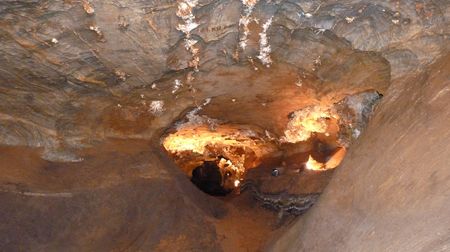OCHTINSKÁ ARAGONITE CAVE
 |
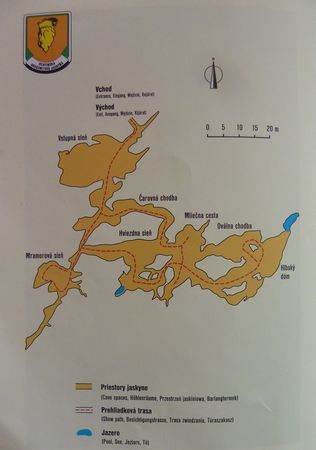 |
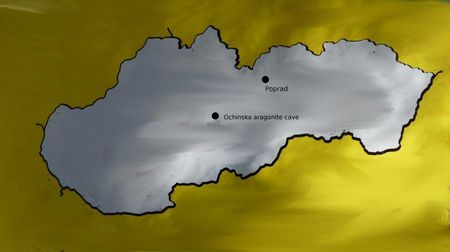 |
|
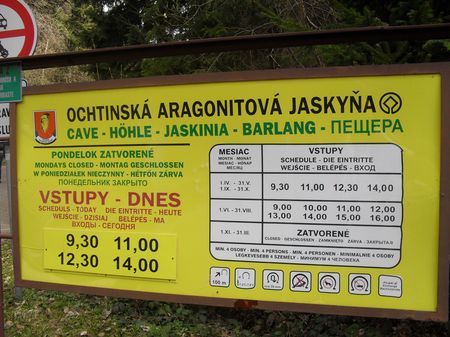 |
LOCATION It's located in the Revúcka Highland near the village of Ochintá in the district of Rožňava. The entrance of the cave is situated on the north-western slope of Hrádok hill. The cave is accessible by a 145 meter-long entrance which opens the cave spaces at 642 meters above sea level. The cave is about 300 meters long. |
HISTORY The cave was discovered by chance by Jan Bystricky in 1954 and opened to the public in 1972. It is included in the UNESCO World Heritage list. Ochtinská Aragonite Cave is unique in its kind. Indeed, there are only two other caves in the world in which the same phenemon occurs: one in Argentina and one in Mexico. Aragonite is formed in a lens of Paleozoic Devoinan crystalline limestone situated amidst non-karst rocks. |
|
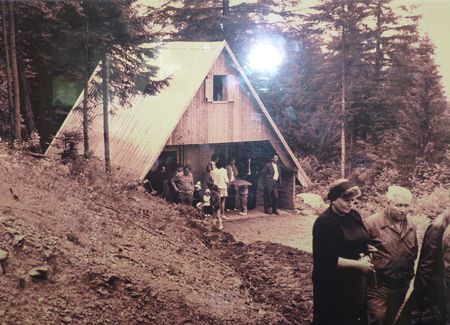 Original entrance |
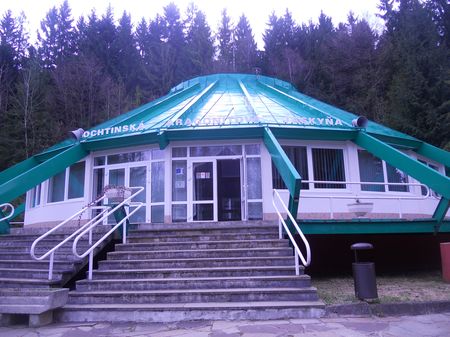 Nowaday's entrance |
|
NATURAL SETTING Cave spaces are formed in a lens of cryptokarst crystalline limestone admist impermeable rocks. Limestone was partially replaced by iron in hot solutions during Palaeozoic folding. Gradual weathering and washing away of ankerite formed primary underground cavities. |
Three generations of aragonite were identified in the cave. They can exist because of the specific geological and physical conditions. |
|
| The oldest ones are milky translucent kidney-shaped formations. They are between 121 and 138 thousand years old. We can find partially recrystallized aragonite, in place metamorphosed to calcite. | 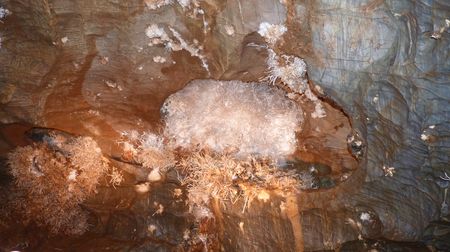 |
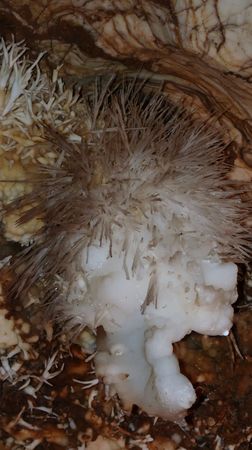 |
The second generation occurs mostly in the form of several centimetre-long needles and spiral helictites. They are around 14 thousand years old. They form clusters or dentristic formations. Aragonite from this generation is stil growing. That's why it has kept its white and clean appearance. |
| The youngest generation forms tiny fans sporadically creating miniatures helictites. | 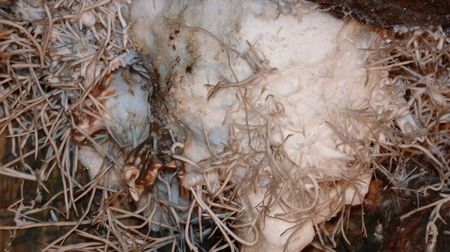 |
Because of the tectonic movement we can observe fissures on the limestone wall. |
|
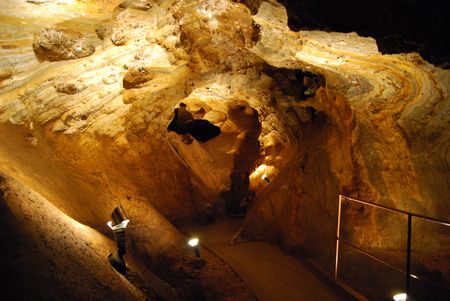 |
 |
|
|
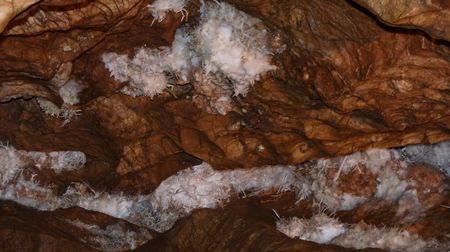 |
|
